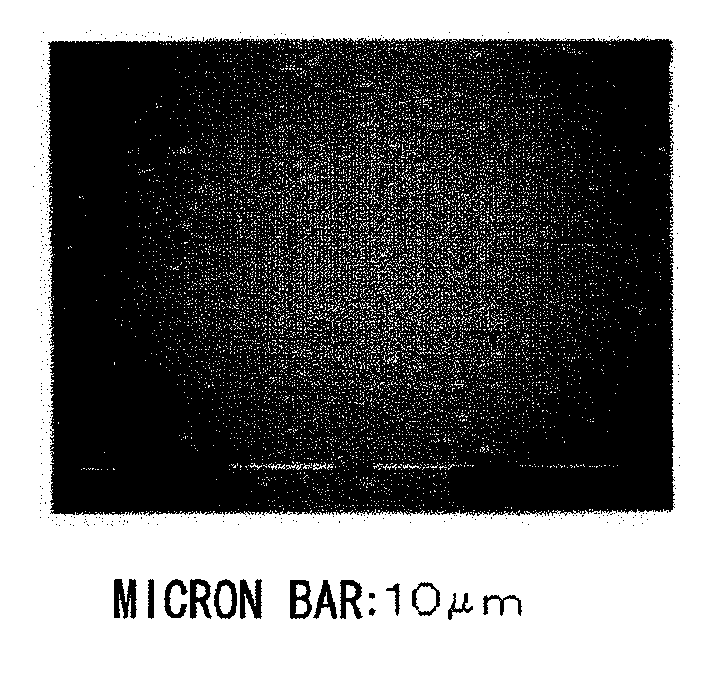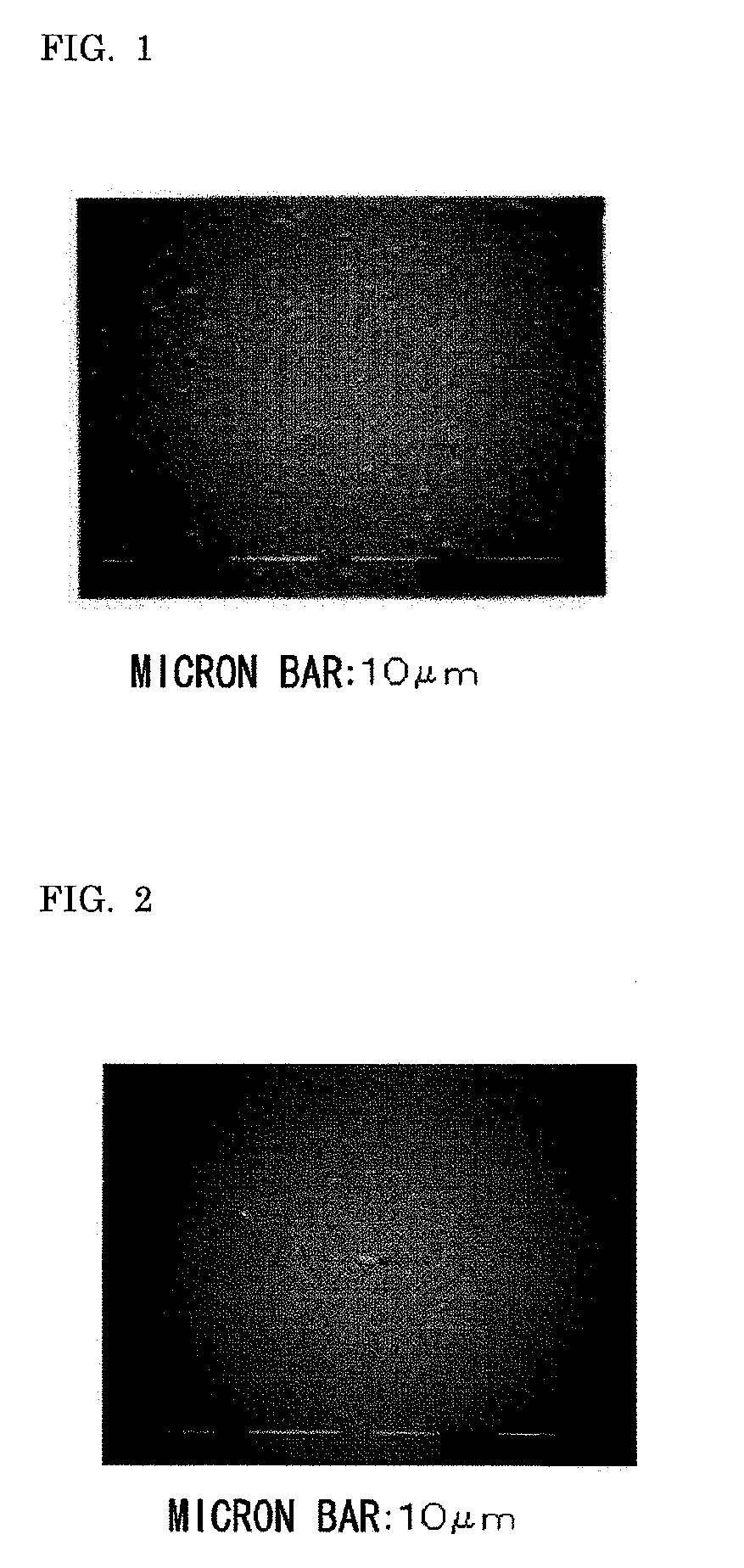Copper clad laminate
- Summary
- Abstract
- Description
- Claims
- Application Information
AI Technical Summary
Benefits of technology
Problems solved by technology
Method used
Image
Examples
reference example 1
[0159]Preparation Example of a Particulate Polyimide
[0160]A particulate polyimide used was prepared by dissolving p-phenylenediamine and pyromellitic acid dianhydride in N,N′-dimethylacetamide, adding a dispersing agent (dispersant: 0.5% by weight relative to the monomers), and then gradually heating the resulting mixture to 160° C. in a nitrogen atmosphere with stirring (40 rpm), and after reaching the temperature, stirring the mixture for 3 hours. The particle-size distribution of the particulate polyimide obtained was determined by a laser diffraction / scattering particle-size distribution measurement device, and as a result, the median size was 0.3 μm and the distribution range was 0.1 to 1 μm. Furthermore, the shape of the particulate polyimide was determined by SEM observation, and as a result, they were cylindrical particles with a ratio of a major axis to a minor axis of 3 to 6.
reference example 2
[0161]Preparation Example of a Thermocompression-Bonding Multilayer Polyimide Film Having Improved Slipping Property
[0162]To N-methyl-2-pyrrolidone were added para-phenylenediamine (PPD) and 3,3′,4,4′-biphenyltetracarboxylic acid dianhydride (s-BPDA) in a molar ratio of 1000:998 such that a monomer concentration was 18% (by weight, the same shall apply hereinafter), and then the mixture was reacted at 50° C. for 3 hours, to give a polyamic acid solution having a solution viscosity of about 1500 poise at 25° C. (a dope for a heat-resistant polyimide). Separately, to N-methyl-2-pyrrolidone were added 1,3-bis(4-aminophenoxy) benzene (TPE-R) and 2,3,3′,4′-biphenyltetracarboxylic acid dianhydride (a-BPDA) in a molar ratio of 1000:1000 such that a monomer concentration was 22%, and further was added triphenyl phosphate in 0.1% by weight relative to the monomers, and then the mixture was reacted at 5° C. for one hour. To the resulting polyamic acid solution having a solution viscosity of a...
reference example 3
[0174]Preparation Example of a Thermocompression-Bonding Multilayer Polyimide Film
[0175]A long three-layer extruded polyimide film was winded onto a wind-up roll as described in Reference Example 2, except that no polyimide particles were added to a dope for a thermoplastic polyimide in a polyimide surface layer. The three-layer extruded polyimide film obtained had the following properties.
[0176]Thermocompression-bonding multilayer polyimide film:[0177]Thickness pattern: 3 μm / 9 μm / 3 μm (total 15 μm),[0178]Static friction coefficient: 1.00 or more.
PUM
| Property | Measurement | Unit |
|---|---|---|
| Temperature | aaaaa | aaaaa |
| Temperature | aaaaa | aaaaa |
| Length | aaaaa | aaaaa |
Abstract
Description
Claims
Application Information
 Login to View More
Login to View More - R&D
- Intellectual Property
- Life Sciences
- Materials
- Tech Scout
- Unparalleled Data Quality
- Higher Quality Content
- 60% Fewer Hallucinations
Browse by: Latest US Patents, China's latest patents, Technical Efficacy Thesaurus, Application Domain, Technology Topic, Popular Technical Reports.
© 2025 PatSnap. All rights reserved.Legal|Privacy policy|Modern Slavery Act Transparency Statement|Sitemap|About US| Contact US: help@patsnap.com


